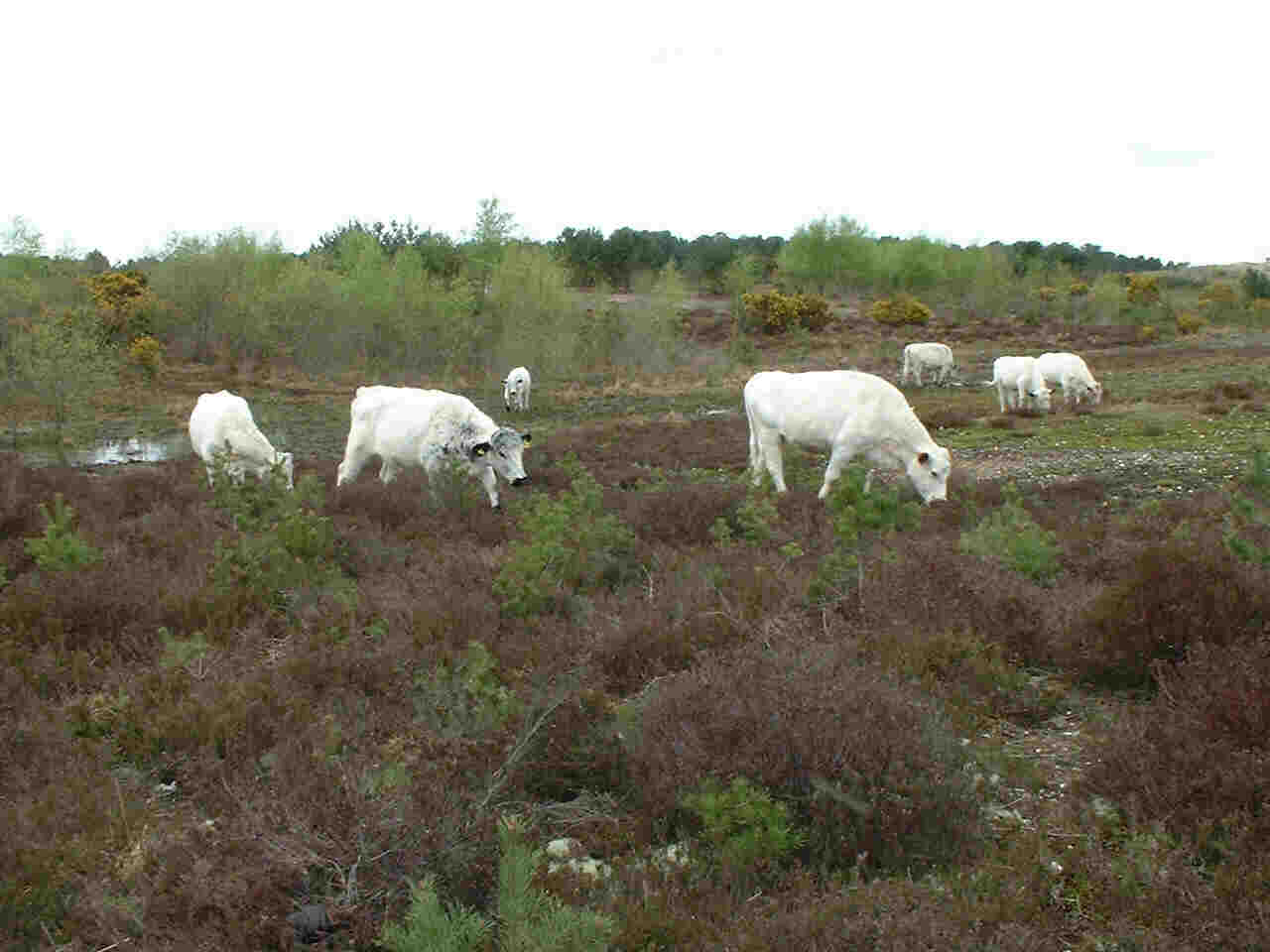 Practicalities
Practicalities Practicalities
Practicalities
The main problem is usually persuading people (even conservation bodies) that grazing their site is possible. Many sites have not been grazed for years -- fences and water supply may be absent or derelict. Some are commons open to public roads. Scrub and trees may have grown up, and local residents often believe the land was always wooded -- despite the trees being only a couple of decades old! The public may feel that fences and animals are intimidating. Sites may be scattered or distant from your holding. (Photo: grazing heathland)
Practicalities can almost always be solved: fencing, water and pens can be put in and scrub cleared, and there are often substantial grants for these. Simple explanatory signs around the site (both before and during grazing) help local people understand the history and value of the land and what is being done, and they may become very supportive and helpful. Stiles and gates can be put in for walkers and riders. In many parts of the country Local Grazing Schemes are being established, which develop networks of conservation sites and graziers -- they can also assist with purchase or sharing of machinery, trailers, mobile handling facilities etc and provide training. Different sites may be suitable for different purposes -- dry heathland for winter forage, marshy grassland in summer and so on. Some productive grassland is useful as back-up grazing to complement poorer sites. Make sure you cover yourself with a written grazing agreement and public liability insurance.
With a bit of determination, conservation grazing is not that difficult.
More conservation grazing index - Back: Conservation management - Next page: Sources of income - Main index page
Page created with Wordperfect 8 and Notepad. Last updated: 28 November 2003. Please send comments to: comment@collingridge.net with the word "comment" in the subject line.